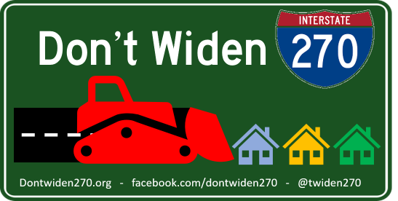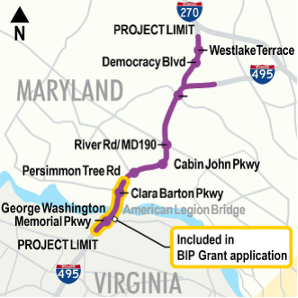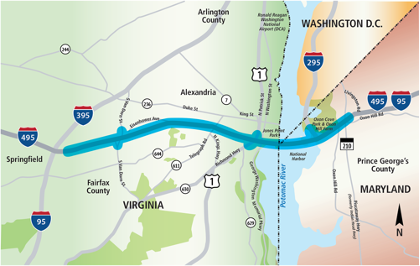Please write to the DC region’s Transportation Planning Board (TPB) today! Your comments opposing the Moore-Hogan toll lanes will go into the public record as the TPB prepares to vote on Visualize 2050, its long-range plan. That plan includes the entirety of the Moore-Hogan toll lane construction project for the American Legion Bridge/I-495/I-270.
ASAP, send your comments to tpbcomment@mwcog.org. Tell officials how the toll lanes would negatively impact you. Let them know you aren’t convinced by the Moore administration’s unsupported assurances (see “MDOT’s true intentions” below). The comment period ends November 21.
Your input matters. Just last month, public activism – including comments sent by many of you – played a significant role in the removal of Virginia's Southside toll lane construction project from Visualize 2050. Please note, although Visualize 2050 seems certain to be approved this year, it can be modified in 2026 and beyond.
Key points you may want to personalize for your comment:
If MDOT turns to a for-profit partner (P3) to fund the toll lanes, the damage done to MD taxpayers and state transportation policy would last for generations.
The vast majority of the public could not afford to pay the sky-high tolls.
Northern VA’s bottleneck would be relocated to MD.
Wherever toll lanes end, new bottlenecks would be created; the only “fix” would be to build more toll lanes.
Congestion would get worse in the remaining general lanes and on roads that connect to the new toll lanes.
Safety would worsen as cars, trucks, and 18-wheelers are crowded together.
The toll lanes would cause profound harm to the environment, public health, public infrastructure, and much more.
MDOT’s true intentions: MDOT officials recently spoke about “truncating” the toll lane plan and even “removing” the lower I-270 segment. But in a letter to the TPB, MDOT rejected changes to Larry Hogan’s original plan. “While MDOT is comfortable to extend the time horizon for [the lower I-270] section from the proposed 2040 to 2045 for Visualize 2050…MDOT opposes any effort to remove this segment from the long-range plan as it would be inconsistent with the NEPA Record of Decision approved by the Federal Highway Administration” (p. 7; emphasis added). Important: That NEPA Record of Decision gave the OK to Hogan’s private, for-profit toll lane plan, the one now in Visualize 2050.
Write today to tpbcomment@mwcog.org.
Thank you for taking action!


